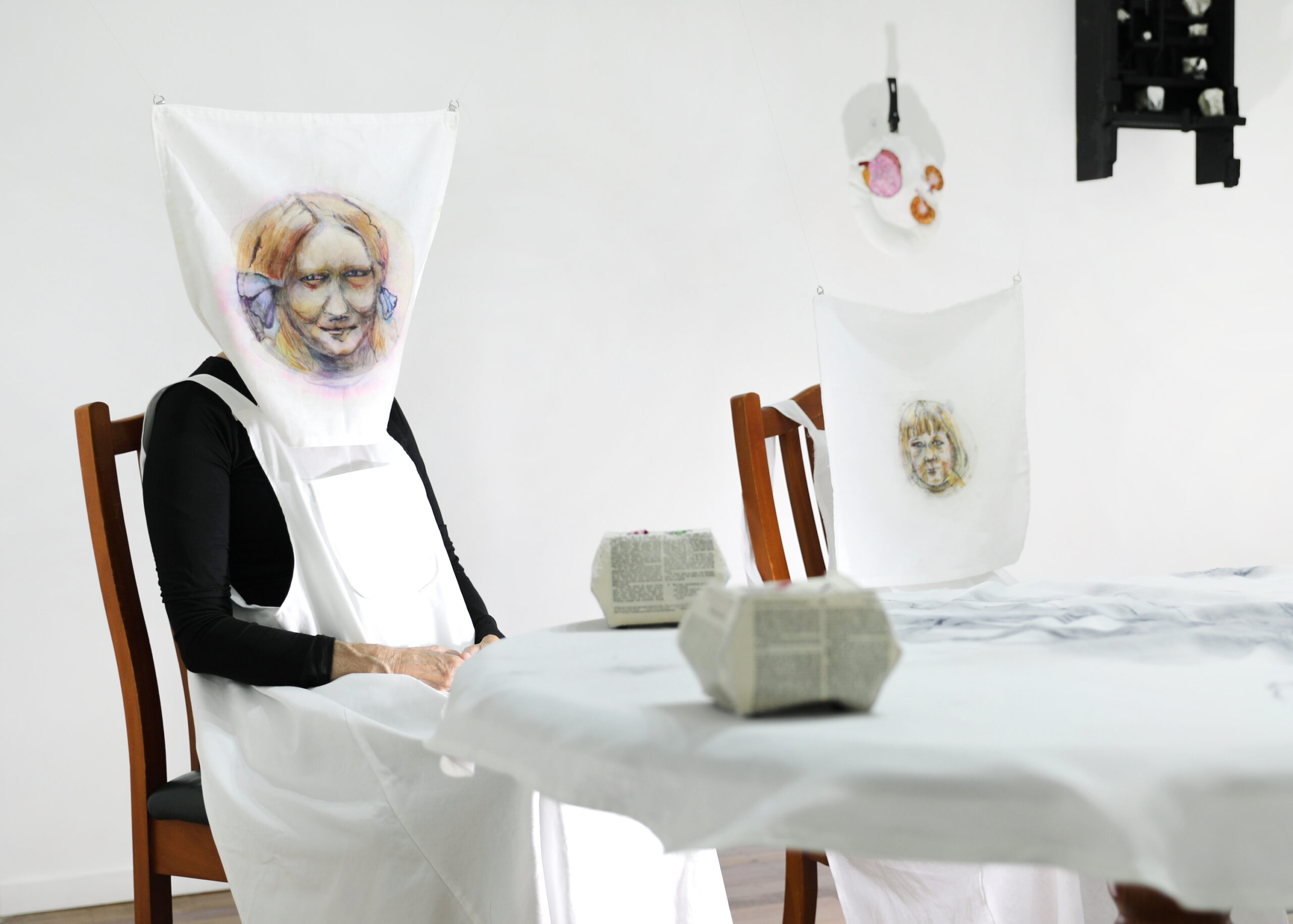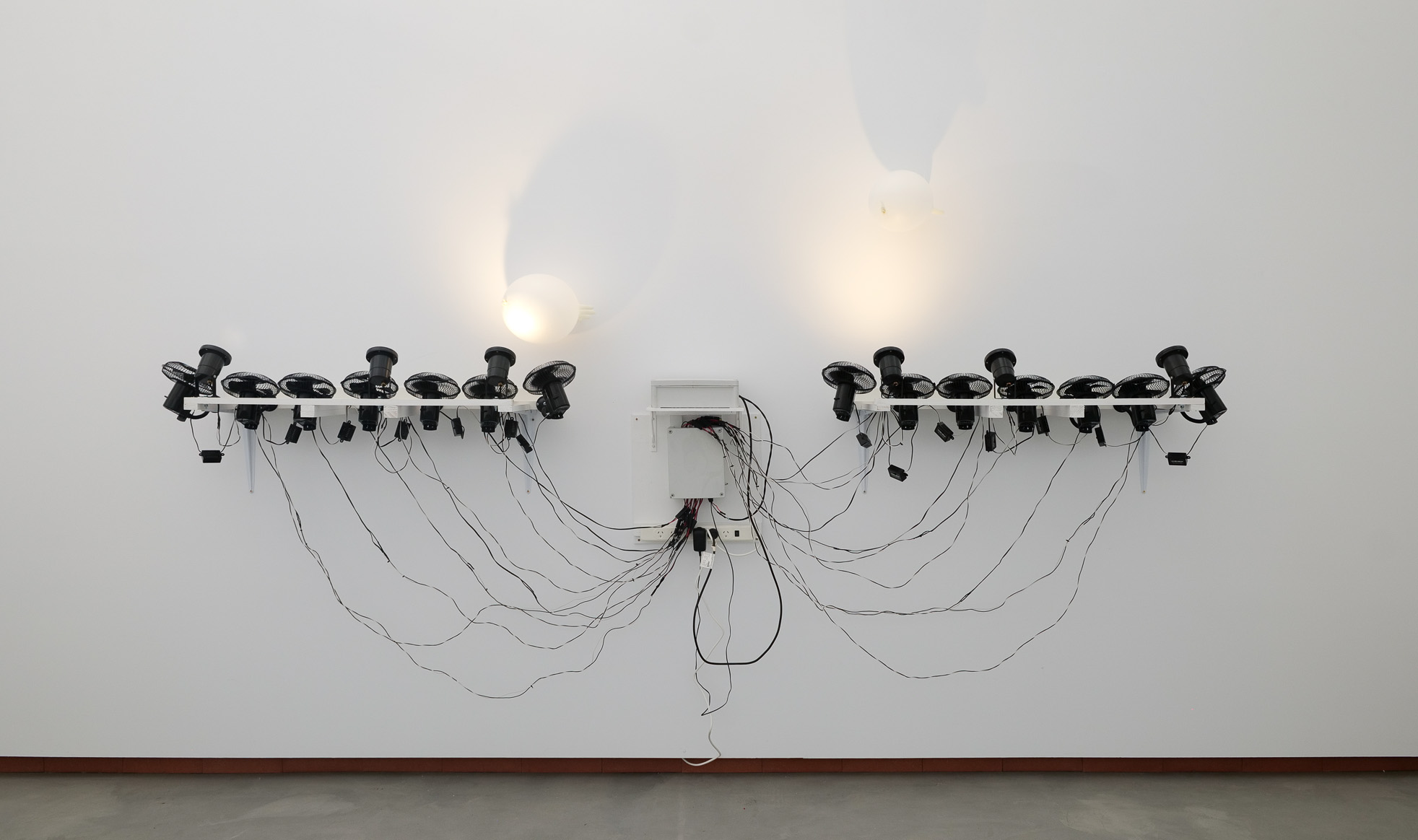Mare Amoris | Sea of Love is the third exhibition within the University of Queensland’s Blue Assembly research program. Spanning four years and drawing in the UQ Centre for Marine Science, it continues Blue Assembly’s exploration of paradigm shifts evident in the relationships between humanity and the ocean, with science accommodating the long-term understanding First Nations peoples have exhibited with the world’s seas.
The first artwork is Djambawa Marawili’s Yathikpa (2011), a painting that asserts this sacred saltwater territory and its role as the spiritual base for the Madarrpa peoples. This painting was part of the successful Blue Mud Bay Native Title Claim (2008) on behalf of the Yolngu (NT) peoples, representing a significant change in Australia’s understanding of Sea Rights. Yet this exhibition casts its net wide across the world’s oceans, deliberately borderless (as is the sea). Its emotional range is similarly broad—embracing “love as an uprising: an active force with which to mobilise, organize and create room for radical expressions of care beyond capital.”[1] This intention is developed in the title, which rejects ‘mare nullius’ (the oceanic equivalent of ‘terra nullius’) and the Eurocentric concept of oceans as devoid of ownership, to assert First Nations stewardship of, and holistic relationships with, the seas.
Both levels of the art museum are surrendered to this subject, with international narratives woven into its exploration of oceanic waters as places of people, families, and ancestral narratives. Many of these stories and cultures may be unfamiliar to Australian audiences, yet their emotional range is engaging.
An early encounter is Abdul-Rahman Abdullah’s Pretty Beach (2019). This installation in a darkened room is a circular ‘fever’ of stingrays under a crystal curtain, a meditation of grief on the loss of his grandfather in the place in New South Wales where Abdullah spent time observing stingrays as a child. The subdued colours (grey floors and walls) sees the grey stingrays camouflaged (similarly to their presence on the sea floor). They contrast with the glittering rain suspended above them, holding the space as though time has stood still. Chun Yin Rainbow Chan’s The novice, fry and fledging (2023) equally engages with the concept of heritage; young fish and bird species in a series of silk paintings are combined with an audio lament that draws the marital capture of the bride together with the caging of animals. Shannon Te Ao’s what was or could be today (again) (2019) uses sound over video to explore broader concepts of time through an individual’s progression; a lone swimmer in the sea viewed from above becomes a meditation that opens to what might be remembered in the body over time and generations.
Mangroves are the subject of Unbound Collective’s PERMEATE | mapping skin and tides of saturated resistance (2023), an evocative two channel video that juxtaposes mangrove forests, healthy and dead, with a soundscape that uses the breath of the mangroves themselves. Their role as “the nursery for life and the oceans” sees a level of simmering rage given that Indigenous attention to mutual benefit has been overturned by poisonous exploitation of these mangrove forests in Kaurna Country (SA).
Other works by Christopher Bassi, Drew Kahu’āina Broderick, Seba Calfuqueo, Mariquita ‘Micki’ Davis, Santiago Mostyn, New Mineral Collective, Leyla Stevens, and Judy Watson equally explore a series of epic individual and cultural stories of grief, love, and hope.
Large scale cyanotypes by Sonja, Elisa Jane and Freja Carmichael, Wagari: Dabiyil, Biram—Vessel: water and sky Nuit Blanche series (2022) hung in the foyer and the high ceilings of the museum make the colour, life, and movement of their saltwater country visible through all the spaces of the museum, lightening both mood and emotion.
This exhibition is a portal to a vast and burgeoning subject, more often explored through science, that conveys the gamut of human experience with the oceans across the globe. Its focus on the creative and interdisciplinary explorations of Australian and international artists explores alternative entry points and a range of emotional touchstones that resonate deeply with the power of this subject.
[1] Introduction: Wall text, Mare Amoris | Sea of Love, UQ Art Museum, 2023.
Louise Martin-Chew is a freelance writer living on Quandamooka Country (Redland City) outside Brisbane. She contributes regularly to national art magazines and catalogues and has authored many books, most recently Margot McKinney: World of Wonder (Museum of Brisbane, 2022) and her first biography Fiona Foley Provocateur: An Art Life (QUT Art Museum, 2021).







